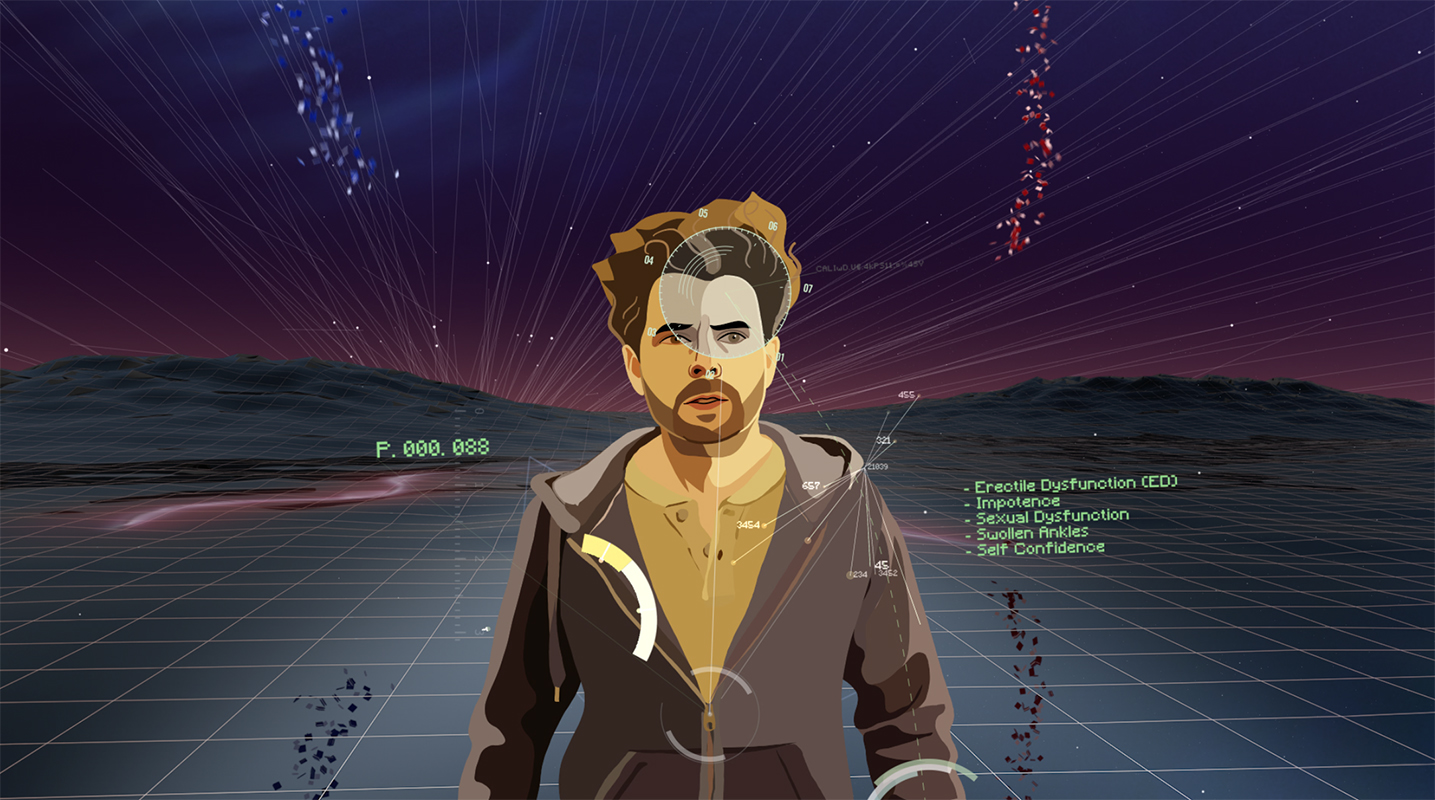Dream Control: Science and TV Explore the Weird Possibilities

Water gushes into a sink, spilling over the edge and pooling on the floor. In the middle of a suburban street, sits a figure whose head, wrapped in layers of plastic, vibrates wildly. A woman climbs off a table in a deserted operating room, searching for the baby she has just delivered — which has mysteriously disappeared.
Images that appear in dreams are frequently unsettling and inexplicable. Typically they are beyond our control, though in some works of speculative fiction, characters can shape their dreams by interacting with technology in fantastic ways that sleep researchers might envy, but can only, well, dream about.
Certain areas of psychology and neuroscience have already offered tantalizing glimpses of what happens in people's brains when they dream, and hint at how dreams may reflect or even influence how brains perceive the waking world. But to what extent is controlling dreams really possible?
Two new television shows, introduced at New York Comic Con this month, explore dream control. One program is a dark comedy, and the other is a psychological thriller, but both introduce narratives suggesting that outside agents can manipulate dreams and dreamers. Sometimes, this benefits the fictional dreamer, but other times … not so much. [7 Mind-Bending Facts About Dreams]
"Dream Corp, LLC" combines animation with live action to tell the stories of desperate people seeking a questionably qualified scientist's assistance to improve their lives through controlled dreaming. "Falling Water" presents an eerie tale of three unrelated characters slowly coming to terms with the realization that they are sharing a common dream.
The fantastic dream technology that these stories describe doesn't exist. But the ability to detect images generated by sleeping brains and even influence how those images take shape is very real indeed, experts told Live Science.
Dream weaver
When you sleep, your brain "goes offline," though it is still just as active as when you're awake, said Robert Stickgold, a sleep researcher at Harvard Medical School. The brain needs time to process all the information that it takes in while a person is awake, and dreams may play a part in sorting and prioritizing experiences and other input, Stickgold told Live Science in 2015.
Get the world’s most fascinating discoveries delivered straight to your inbox.
How the brain might do that is a matter of some debate among scientists, said Moran Cerf, a professor of neuroscience and business at Northwestern University in Illinois, and a scientific consultant for "Falling Water."
Cerf, who has investigated how dreams interact with short-term memory, told Live Science that one theory describes dreams as a means for the brain to explore potential outcomes for a recent event. Freudian theory, on the other hand, says that the brain uses dreams to call up suppressed memories. And yet another theory suggests that dreams are created when memories are shuffled from one area of the brain to another, Cerf said.
For most dreamers, the result is a hodgepodge of baffling images and scenes that frequently fade upon waking. Some people experience a state known as lucid dreaming, in which they are aware that they are dreaming and can even control what they dream about.
The prospect of guided dream control drives the story in "Dream Corps," in which "Dr. Roberts" (Jon Gries) wires up hapless patients in his strip-mall laboratory and walks them through dreamscapes where they confront their problems, such as erectile dysfunction. In the process, they have their lives changed, "but with some terrible side effects that come out down the line," Gries told Live Science. [Top 11 Spooky Sleep Disorders]
Dream a little dream
"Seeing" what someone else is dreaming isn't as far-fetched as it might sound. Scientists recently used functional magnetic resonance imaging (fMRI) to scan sleepers' brains, and the researchers were able to identify imagery based on brain-wave activity.
And controlling what people dream about is also possible — up to a point, Cerf explained.
"Right now, we are in the beginning of mapping things that you can do to a person so it will penetrate their dreams — but not wake them up," he said. For example, Cerf explained, if you were to spray water on a dreamer, the person would likely report water in the dream.
"It could be a waterfall, or sitting by the ocean. When I spray water on your body, the tactile experience of water gets into your story," Cerf said. "Neuroscientists are now mapping all the things that you can do to a person sleeping — concentration, duration, all the details — in hope of having a menu of things that won't wake you up but can penetrate dreams," he added.
As for the ability to dream collectively, like the characters in "Falling Water," dreamers who live in the same regions or who have shared common experiences — especially traumatic ones — have been known to dream about similar themes, Cerf told Live Science.
"After 9/11, people in New York City had nightmares about planes hitting buildings," he said. "Events in the outside world that are shared by a society are also shared in their dreams."
"Falling Water" (USA Network) debuted Oct. 13, and "Dream Corp, LLC" (Adult Swim) debuted Oct. 23.
Original article on Live Science.

Mindy Weisberger is a science journalist and author of "Rise of the Zombie Bugs: The Surprising Science of Parasitic Mind-Control" (Hopkins Press). She formerly edited for Scholastic and was a channel editor and senior writer for Live Science. She has reported on general science, covering climate change, paleontology, biology and space. Mindy studied film at Columbia University; prior to LS, she produced, wrote and directed media for the American Museum of Natural History in NYC. Her videos about dinosaurs, astrophysics, biodiversity and evolution appear in museums and science centers worldwide, earning awards such as the CINE Golden Eagle and the Communicator Award of Excellence. Her writing has also appeared in Scientific American, The Washington Post, How It Works Magazine and CNN.


